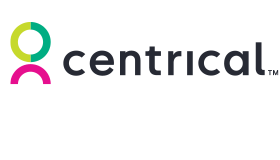Andrea Meyer at Centrical looks at the nesting stage and elevating the employee performance experience.
In this article, we will discuss how the PX Methodology strategies can be applied to the nesting phase.
Nesting is considered to be the second stage in the employee journey. During this stage, employees have been fully onboarded and are building their confidence by developing their knowledge and skills – particularly around products and services, customer interactions, and internal systems and procedures.
PX strategies applied during this stage accelerate time to proficiency while creating a strong foundation for engagement and increasing the likelihood of employee longevity.
Below is an outline of the methodology’s four strategies, and how, when applied to nesting, they can set employees up for long-term success.
The Performance Experience Methodology in the Nesting Stage
The PX Methodology consists of four strategies: Align, Engage, Perform, and Optimize. Below is an overview of how to apply each to the nesting stage.
Strategy 1: Align With Stage-Appropriate, Individual KPIs
Get your new employees aligned by assigning KPIs to measure learning progress and performance as they move out of the onboarding phase and into production.
These KPIs should be achievable with the understanding that performance targets may change as they transition into production. Relevant nesting KPIs can include:
- Knowledge retention/learning success rate
- Quality-related metrics (e.g., business and compliance critical errors and resolution rates)
- Adherence to processes and procedures
- Efficiency-related metrics (handle time, volume, utilization rates)
Strategy 2: Engage Employees With Their Performance
Once you’ve determined the best KPIs for nesting employees, it is important to provide clear visibility into their progress and performance.
Not only does this give employees and their supervisors a glimpse into areas of success and where improvement may be needed, but it can motivate employees to work toward achieving their metrics .
Rather than relegate this to a static scorecard, gamify these KPIs. By incorporating gamification into this process, you will create an enjoyable and rewarding employee performance experience, motivating employees to continue the learning journey, developing their knowledge and skillset, and changing behaviors for long-term success.
One example of how to engage employees: If a select KPI (for example, adherence) is below target, create a team-to-team or peer-to-peer challenge, recognizing and rewarding the individuals and teams that show the greatest level of improvement.
This will motivate employees to invest more time in their training and improve as fast as possible. Additionally, challenges such as this create stronger team engagement (especially for remote teams) and commitment – ultimately driving better business outcomes.
Strategy 3: Provide Actionable Performance Feedback
The third strategy of the PX Methodology is “perform” and this is where feedback most strongly comes into play.
During the nesting period, employees are usually eager to receive feedback and are open to recommendations.
But it can be challenging for supervisors to provide relevant, helpful feedback when it is needed – here are a few strategies to consider:
Digitally Delegate
Consider leveraging AI to provide new employees with a digital coach. A digital coach can automatically course-correct employees, empowering them to self-manage and improve their performance.
For instance, an employee might lack specific product knowledge, thus negatively impacting their conversion rate during nesting.
By leveraging AI, the digital coach will recognize this specific knowledge gap, and trigger a relevant microlearning activity to the employee, such as a simulation or quiz.
The employee, in turn, can have a quick learning session between calls, thus filling the gap and being better equipped for their next customer interaction.
Leverage AI-Enabled Coaching
Ideally, supervisors should be able to easily and efficiently identify and address performance issues, as well as offer support for employees – and leveraging AI-driven insights can be incredibly helpful in this capacity.
These insights enable supervisors to quickly identify employees who require immediate help and provide recommendations on actionable next steps.
Recognize Success
Course correction is important, but recognition for reaching goals, improving performance or knowledge, or simply for a job well done can be just as important.
AI-enabled insights can provide supervisors recommendations for employee recognition by identifying those employees who demonstrate improvement and success during nesting.
AI can also trigger digital recognition automatically, through notifications and digital badges for achieving milestones.
To sum up, continuous coaching, recognition and rewards, and empowering employees to own their role and their success collectively contribute to better retention and performance while driving cost efficiencies by reducing the effort on supervisors.
Strategy 4: Optimize the New Hire Experience
Feedback from employees that successfully reach the end of the nesting stage can prove invaluable for refining and improving processes, benefiting both future new hires and the organization.
When collecting nesting-stage feedback, we strongly recommend standardizing the process, which will help greatly with evaluating the feedback and determining actionable steps.
We also recommend analyzing all hires (good and bad) based on those that successfully completed nesting. Findings from those analyses can help optimize recruitment profiles, which can in turn improve hiring practices going forward.
A Partner
A connected Performance eXperience Platform provides a complete solution that enables optimal employee performance and supports your organization’s transformation.
The platform includes every required capability to support each of the PX strategies, including targeted microlearning, AI Microlearning, real-time performance visibility, augmented coaching, advanced gamification, and Voice of Employee.
Centrical customers have experienced solid results, including:
- 15% increase in CSAT scores
- 50% faster onboarding
- 30% reduction in early attrition
Key Takeaways
We’ve just shared a glimpse at Centrical’s Performance Experience Methodology, its four core strategies, and how these strategies can be applied to the nesting stage to set new employees up for success as they move into production. A few key takeaways:
The nesting period is a critical time for new employees to build their knowledge, skills, and confidence.
During this period, it is helpful to align new employees with individual, stage-appropriate KPIs, such as knowledge retention rate, adherence to processes and procedures, and metrics related to basic quality and efficiency skills.
Keep employees engaged with their progress and performance by incorporating gamification into their KPIs. Gamification will help keep employees motivated, boost job satisfaction, accelerate time to proficiency, and increase the likelihood of retention.
Performance feedback is incredibly important during nesting. By leveraging AI and a digital coach and empowering supervisors with insights, it’s easier to identify and address where employees need improvement and recognize success.
Organizations can optimize the nesting experience and hiring practices by collecting feedback and evaluating findings from employees who both completed this stage and those who left the company.
This blog post has been re-published by kind permission of Centrical – View the Original Article
For more information about Centrical - visit the Centrical Website
Call Centre Helper is not responsible for the content of these guest blog posts. The opinions expressed in this article are those of the author, and do not necessarily reflect those of Call Centre Helper.
Author: Centrical
Published On: 7th Sep 2023 - Last modified: 9th Dec 2024
Read more about - Guest Blogs, Andrea Meyer, Centrical






 Centrical provides a real-time performance management, microlearning, gamification, coaching, and voice of the employee platform for frontline teams. The solution inspires and personally guides employee success and growth by making every moment actionable.
Centrical provides a real-time performance management, microlearning, gamification, coaching, and voice of the employee platform for frontline teams. The solution inspires and personally guides employee success and growth by making every moment actionable. 








